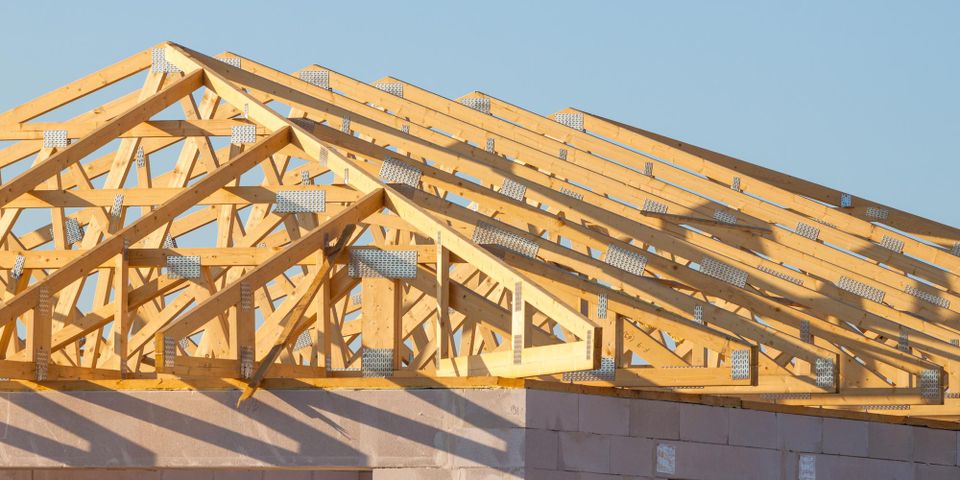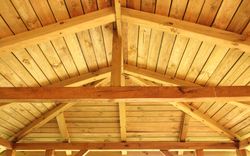
Trusses support the weight of building materials and maintain the integrity of a structure. They support high pressure and heavy weight, permitting architects to get creative with styles and shapes while expanding dimensions. Here are a few of the most common types of trusses and how they support buildings.
3 Types of Trusses & Their Functions
King & Queen Post
 Made from solid wood or a composite of wood and steel, king post trusses provide structural support for many small homes and businesses. They usually consist of a single post that runs vertically from apex of the roof to support the lower beams. Queen post trusses, on the other hand, use two vertical posts connected by a horizontal beam to provide support for pitch roofs in residential and commercial properties.
Made from solid wood or a composite of wood and steel, king post trusses provide structural support for many small homes and businesses. They usually consist of a single post that runs vertically from apex of the roof to support the lower beams. Queen post trusses, on the other hand, use two vertical posts connected by a horizontal beam to provide support for pitch roofs in residential and commercial properties.
Howe
Howe trusses are also typically made from a mixture of wood and steel, which makes them resilient and durable. Though often seen on bridges and railway enclosures, they may also be used to support residential and commercial buildings. Their long construction is excellent for wide structures like schools, motels, or strip malls. They are also very elegant and look quite attractive when exposed, such as in gables or carriage porches.
Pratt
Pratt trusses are widely valued for their affordability and are made completely out of steel. They offer both vertical tension and diagonal compression to support metal roofs in very large structures, such as warehouses, factories, and convention centers. They are often used to support the roofs of buildings with plenty of open space, such as aircraft hangars, barns, or storage facilities.
When you need dependable trusses that will support the weight of your building, allow H & H Truss & Supply to manufacture them for you. This building supply company designs and produces wood trusses for commercial properties throughout Clarksville, AR. Call them at (479) 754-4999 to ask about ordering construction materials, and visit their website to learn more about their supplies and services.
About the Business
Have a question? Ask the experts!
Send your question

